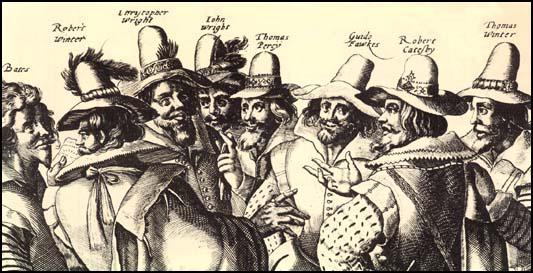Thomas Bates
Thomas Bates was born in about 1570. He worked as a servant in the household of Robert Catesby. Bates had many duties including purchasing animals for the estate.
In 1605 Catesby devised the Gunpowder Plot, a scheme to kill James and as many Members of Parliament as possible. Catesby planned to make the king's young daughter, Elizabeth, queen. In time, Catesby hoped to arrange Elizabeth's marriage to a Catholic nobleman. Over the next few months Catesby recruited John and his brother Robert Christopher Wright, to join the conspiracy.
Catesby's plan involved blowing up the Houses of Parliament on 5 November. This date was chosen because the king was due to open Parliament on that day. At first the group tried to tunnel under Parliament. This plan changed when a member of the group was able to hire a cellar under the House of Lords. The plotters then filled the cellar with barrels of gunpowder. Guy Fawkes was given the task of creating the explosion.

One of the people involved in the plot was Francis Tresham. He was worried that the explosion would kill his friend and brother-in-law, Lord Monteagle. Tresham therefore sent Lord Monteagle a letter warning him not to attend Parliament on 5 November.
Lord Monteagle became suspicious and passed the letter to Robert Cecil, the king's chief minister. Cecil quickly organised a thorough search of the Houses of Parliament. While searching the cellars below the House of Lords they found the gunpowder and Guy Fawkes. He was tortured and he eventually gave the names of his fellow conspirators.
Bates was captured in Staffordshire on 12th November. Found guilty of treason he was executed on 30th January, 1606. On the scaffold Thomas Bates claimed that his "affection for his master had caused him to forget his duty to God, the King and Country."
